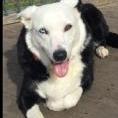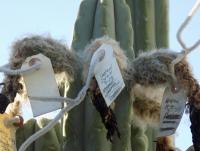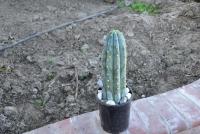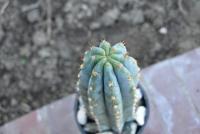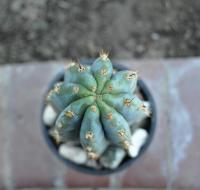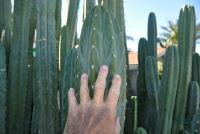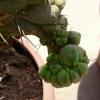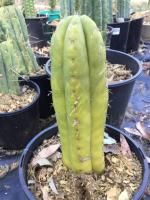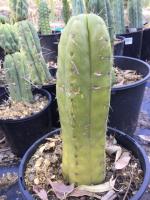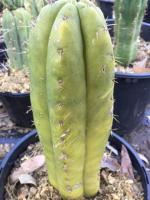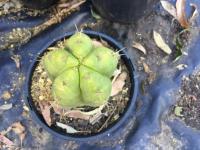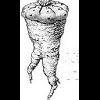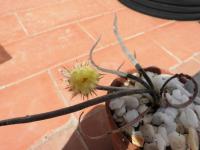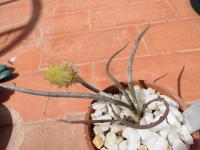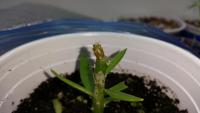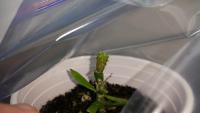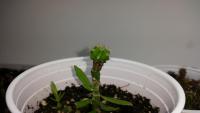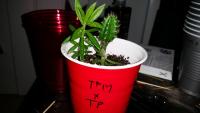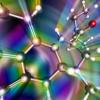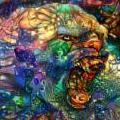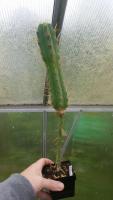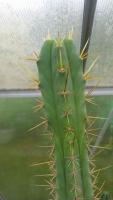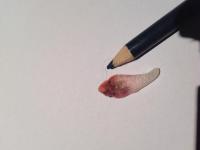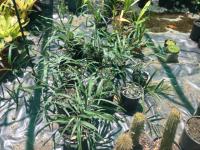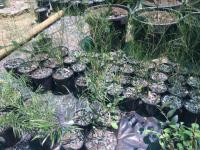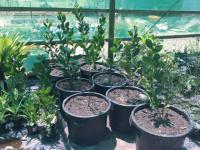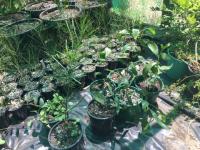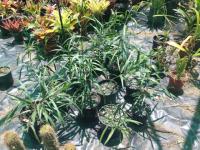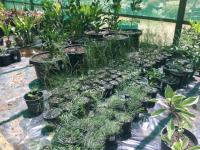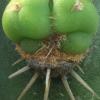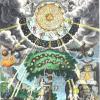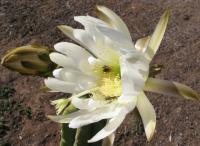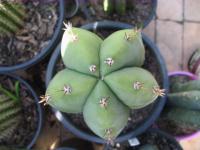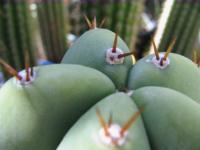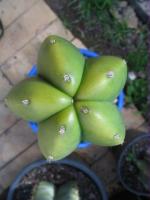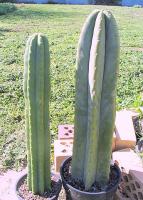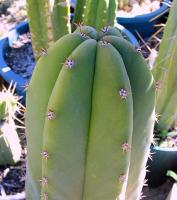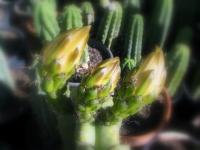Leaderboard
Popular Content
Showing content with the highest reputation on 12/09/2015 in all areas
-
Naw much love to you beauties! I am drunk so mill report back later, wish many blessings and thanks to the good eggs here, the peeps who have shared seed, knowledge and themselves, i was never on a forum before here, and now this is the only forum i am a pdrt of. stoked to be hetqe with u alla. love love love X5 points
-
doublebenno- how do you explain the white hairs totally covering the fruits of my bridgesii helen? As for my statement that I felt icaros were more glaucus than what was shown for #4, heres some pics of several icaros in my garden. the first is a rooting cutting from a seed grown plant this is a mature icaro growing in my garden something to consider regarding spine growth at aeroles.....if a plant has the tendency to go completely spineless on mature stems, who's to say all stems grown anywhere in the world will exhibit the exact same growth regarding spine formation? Which pachanois have considerable spines at the base and none on the tips? Most pachanois I've experienced have fairly consistent spine growth at the aeroles everywhere up & down the stem with longer more developed spines near the base. None that I've seen or grown go spineless near the tip, unless its something like HZ which is nearly spineless in its entirety.4 points
-
Happy Birthday Mystical! /applications/core/interface/imageproxy/imageproxy.php?img=http://1.bp.blogspot.com/-kCRO-AYnO_c/UxwKc_C5kiI/AAAAAAAAVXU/agS14cfYINU/s1600/2014_03_01%2Btoadstool%2Bcake.jpg&key=bf9f5b818ffc94eb771b0050c44450db28cfd22d558ad03a8a668d7625fedf8a4 points
-
Dear Possums, Fuck you. You've eaten my plants one too many times and this means war. I've been patient, more than reasonable. When you ate my Tomatoes I let it slide. When you ate my chilies I shrugged it off. I was even willing to let bygones be bygones and forgive the capsicum you greedily scoffed as my back was turned. Well no more. You knocked over my Khat just as it was taking off and that I cannot forgive. I'm going to use everything at my disposal short of killing you to make sure this never happens again. Merry Christmas, Stonewolf If anyone has any suggestions as to how to deal with these bastards I'd appreciate it. I'm getting a greenhouse but not everything with fit in there.3 points
-
Who's had good experiences with probiotics/prebiotics in relation to their mental health? A randomized controlled trial to test the effect of multispecies probiotics on cognitive reactivity to sad mood Background: Recent insights into the role of the human microbiota in cognitive and affective functioning have led to the hypothesis that probiotic supplementation may act as an adjuvant strategy to ameliorate or prevent depression. Objective: Heightened cognitive reactivity to normal, transient changes in sad mood is an established marker of vulnerability to depression and is considered an important target for interventions. The present study aimed to test if a multispecies probiotic containing Bifidobacterium bifidum W23, Bifidobacterium lactis W52, Lactobacillus acidophilus W37, Lactobacillus brevis W63, Lactobacillus casei W56, Lactobacillus salivarius W24, and Lactococcus lactis (W19 and W58) may reduce cognitive reactivity in non-depressed individuals. Design: In a triple-blind, placebo-controlled, randomized, pre- and post-intervention assessment design, 20 healthy participants without current mood disorder received a 4-week probiotic food-supplement intervention with the multispecies probiotics, while 20 control participants received an inert placebo for the same period. In the pre- and post-intervention assessment, cognitive reactivity to sad mood was assessed using the revised Leiden index of depression sensitivity scale. Results: Compared to participants who received the placebo intervention, participants who received the 4-week multispecies probiotics intervention showed a significantly reduced overall cognitive reactivity to sad mood, which was largely accounted for by reduced rumination and aggressive thoughts. Conclusion: These results provide the first evidence that the intake of probiotics may help reduce negative thoughts associated with sad mood. Probiotics supplementation warrants further research as a potential preventive strategy for depression Magnetic resonance spectroscopy reveals oral Lactobacillus promotion of increases in brain GABA, N-acetyl aspartate and glutamate. The gut microbiome has been shown to regulate the development and functions of the enteric and central nervous systems. Its involvement in the regulation of behavior has attracted particular attention because of its potential translational importance in clinical disorders, however little is known about the pathways involved. We previously have demonstrated that administration of Lactobacillus rhamnosus (JB-1) to healthy male BALB/c mice, promotes consistent changes in GABA-A and -B receptor sub-types in specific brain regions, accompanied by reductions in anxiety and depression-related behaviors. In the present study, using magnetic resonance spectroscopy (MRS), we quantitatively assessed two clinically validated biomarkers of brain activity and function, glutamate+glutamine (Glx) and total N-acetyl aspartate+N-acetylaspartylglutamic acid (tNAA), as well as GABA, the chief brain inhibitory neurotransmitter. Mice received 10(9) JB-1 per day for 28days and were subjected to MRS weekly and again 4weeks after cessation of treatment to ascertain temporal changes in these neurometabolites. Baseline concentrations for Glx, tNAA and GABA were equal to 10.4±0.3mM, 8.7±0.1mM, and 1.2±0.1mM, respectively. Delayed increases were first seen for Glx (~10%) and NAA (~37%) at 2weeks which persisted only to the end of treatment. However, Glx was still elevated 4weeks after treatment had ceased. Significantly elevated GABA (~25%) was only seen at 4weeks. These results suggest specific metabolic pathways in our pursuit of mechanisms of action of psychoactive bacteria. They also offer through application of standard clinical neurodiagnostic techniques, translational opportunities to assess biomarkers accompanying behavioral changes induced by alterations in the gut microbiome. Psychotropic effects of Lactobacillus plantarum PS128 in early life-stressed and naïve adult mice. Ingestion of specific probiotics, namely “psychobiotics”, produces psychotropic effects on behavior and affects the hypothalamic-pituitary-adrenal axis and neurochemicals in the brain. We examined the psychotropic effects of a potential psychobiotic bacterium, Lactobacillus plantarum strain PS128 (PS128), on mice subjected to early life stress (ELS) and on naïve adult mice. Behavioral tests revealed that chronic ingestion of PS128 increased the locomotor activities in both ELS and naïve adult mice in the open field test. In the elevated plus maze, PS128 significantly reduced the anxiety-like behaviors in naïve adult mice but not in the ELS mice; whereas the depression-like behaviors were reduced in ELS mice but not in naïve mice in forced swimming test and sucrose preference test. PS128 administration also reduced ELS-induced elevation of serum corticosterone under both basal and stressed states but had no effect on naïve mice. In addition, PS128 reduced inflammatory cytokine levels and increased anti-inflammatory cytokine level in the serum of ELS mice. Furthermore, the dopamine level in the prefrontal cortex (PFC) was significantly increased in PS128 treated ELS and naïve adult mice whereas serotonin (5-HT) level was increased only in the naïve adult mice. These results suggest that chronic ingestion of PS128 could ameliorate anxiety- and depression-like behaviors and modulate neurochemicals related to affective disorders. Thus PS128 shows psychotropic properties and has great potential for improving stress-related symptoms An Investigation of the Acute Effects of Oligofructose-Enriched Inulin on Subjective Wellbeing, Mood and Cognitive Performance Inulin is a natural food component found in many plants that are part of the human diet (e.g., leeks, onions, wheat, garlic, chicory and artichokes). It is added to many foods and is used to increase dietary fibre, replace fats or carbohydrates, and as a prebiotic (a stimulant of beneficial bacteria in the colon). Oligofructose, which is also present in these foods, produces similar effects and most research has used a combination of these products. A previous study (Smith, 2005) investigated the effects of regular consumption of oligofructose-enriched inulin on wellbeing, mood, and cognitive performance in humans. The results showed that oligofructose-enriched inulin had no negative effects but that it did not improve wellbeing, mood, or performance. The aim of the present study was to examine the acute effects of oligofructose-enriched inulin (5 g) over a 4 h period during which the participants remained in the laboratory. A double blind placebo (maltodextrin) controlled study (N = 47) was carried out with the order of conditions being counterbalanced and the two sessions a week apart. On each test day mood and cognitive performance were assessed at baseline (at 8:00) and then following inulin or placebo (at 11:00). Prior to the second test session (at 10:30) participants completed a questionnaire assessing their physical symptoms and mental health during the test morning. The inulin and placebo were provided in powder form in 5 g sachets. Volunteers consumed one sachet in decaffeinated tea or decaffeinated coffee with breakfast (9:00). Questionnaire results showed that on the day that the inulin was consumed, participants felt happier, had less indigestion and were less hungry than when they consumed the placebo. As for performance and mood tasks, the most consistent effects were on the episodic memory tasks where consumption of inulin was associated with greater accuracy on a recognition memory task, and improved recall performance (immediate and delayed). Further research is required to identify the mechanisms that underlie this effect with glucose metabolism being one candidate. This schematic represents the putative modulatory capability of diet, especially dietary extremes, represented by the Mediterranean-style diet, rich in components which support the gut microbiota, and the Western-style diet, with high fat and animal protein which mediate a detrimental impact on the gut microbiota and their metabolic output, on the gut:brain axis. Key intermediaries in this communication highway are the metabolites produced/regulated by the gut microbiota [e.g., serotonin/5-hydroxytryptamine (5-HT), gamma-amino butyric acid (GABA), glutamate (Glu), Phenylalanine (Phe), Tryptophan (Trp), tyrosine (Tyr), Carnosine, short-chain fatty acids (SCFA), Threonine (Thr), Alanine (Ala), Lysine (Lys), Glycine (Gly), Serine (Ser), aspartic acid (Asp), Ammonia, gut hormone/incretin production], microbial regulation of barrier integrity (both within the gut and at the blood brain barrier, BBB), and nutrient absorption at the mucosal surface, which is itself controlled in part by gut bacteria. These activities have the potential to impact on neurotransmission, inflammation, redox potential and epigenetic regulation of developmental processes, as well as neurological function, probably through the vagus nerve or in certain cases, may mediate direct effects on the brain [Source] Loss of contact with “old friends” and increased inflammatory conditions in the modern world. In populations adequately exposed to old friends, such as many societies in the developing world, priming of regulatory T cells (Treg) is sufficient to maintain an appropriate balance of Treg to effector T cells (Teff), with the result that inappropriate inflammation is generally constrained. When contact with the old friends is disrupted as a result of modern cultural practices (e.g. sanitation, water and food treatment, modern medicines), priming of Treg is inadequate, with the result that the ratio of Treg to Teff is low. In this situation, the population as a whole is at risk for a variety of syndromes attributable to inadequate termination of inflammatory responses to any of a range of environmental stimuli. Consistent with this, although the prevalence of serious infections is significantly reduced in the industrialized world, rates of chronic inflammatory conditions (e.g. autoimmune diseases, allergies, asthma, and cardiovascular disease) have been shown in many studies to be much higher than in the developing world. Some individuals have a genetic background and/or immunological history that places them at risk for disorders, such as multiple sclerosis (MS), inflammatory bowel disease (IBD) and type 1 diabetes mellitus (DM), characterized by overactive/uncontrolled T helper (Th) type 1 and/or Th17 activity. In other individuals, Th2 responses are more liable to inadequate control, resulting in asthma and allergic disorders. While not developing gross immune-related pathology, a further group of individuals with inadequate termination of either Th1 or Th2 inflammatory responses is susceptible to CNS effects of cytokines, including major depressive disorder (MDD). It should be noted, however, that conditions associated with Th1/Th17 and Th2 dysregulation are highly comorbid with MDD. IL-10: interleukin-10; TGF-β: transforming growth factor-β [source] The ‘‘psychomicrobiotic’’: Targeting microbiota in major psychiatric disorders: A systematic review.: The term ‘‘dysbiosis’’ refers to situations where microbial composition and functions are shifted from their normal beneficial state to another that is deleterious to the host’s health. The microbiota dysbiosis may negatively impact CNS functioning through various intertwined pathways that collectively form the ‘‘brain-gut axis’’. These pathways can be described as follows:modification of intestinal permeability that allows entry of endotoxins in the systemic blood flow. The lipopolysaccharide (LPS) is a potent pro-inflammatory endotoxin of the cell walls of gram-negative bacteria that can alter neuronal activity in the limbic system (e.g. increased amygdala activity) and also activate microglia, thus potentially contributing to chronic inflammation in the host’s CNS. Leakage of LPS from the intestine might be a trigger for peripheral inflammatory responses that lead to de novo production of cytokines in the brain. Improving the epithelial barrier may reduce traffic of bacteria and their byproducts and hence be a way to stop the inflammatory response;neuropeptides synthesis;modulation of local and peripheral inflammation. The gut microbiota regulates the development of lymphoid structures and modulates the differentiation of immune cell subsets thus maintaining homeostatic interactions between the host and the gut microbiota. Certain specific bacteria, including members of the Enterobacteriaceae family, appear to be better equipped for survival under the prevailing conditions in the inflamed gut than are the anaerobic commensals dominant in healthy individuals. Given the postulated anti-inflammatory effects of butyrate, it is possible that depletion in butyrate producing bacteria in dysbiosis may contribute to inflammation. Major depressive disorder, bipolar disorder and schizophrenia are associated with a dysregulation of immune responses as reflected by the observed abnormal profiles of circulating pro- and anti-inflammatory cytokines in affected subjects;decrease in absorption of beneficial and essential nutrients (e.g. essential amino acids, vitamins, polyunsaturated fatty acids), increase of deleterious compound synthesis (ammonia, phenols, indoles, sulphide and amines), reduction of the antioxidant status and increase in lipid peroxidation, increase of carbohydrate malabsorption;activation/deactivation of the autonomic nervous system that is directly connected to the nucleus tractus solitarius. This nucleus in turn issues direct noradrenergic ascending projections to brain areas involved in anxiety regulation (namely amygdala, basal forebrain cholinergic system and cortex);modulation of brain-derived neurotrophic factor;increase of small intestinal bacterial overgrowth and/or gastric/instestinal pathogens (e.g. Helicobacter pylori) Schizophrenia and bipolar disorders Severance et al. recently measured serological surrogate markers of bacterial translocation (soluble CD14 (sCD14) and lipopolysaccharide binding protein (LBP)) in bipolar subjects (n = 38) and schizophrenia subjects (n = 141) compared to controls. sCD14 seropositivity conferred a 3.1-fold increased odds of association with schizophrenia (OR = 3.09, P < 0.0001) compared to controls. Case–control differences in sCD14 were not matched by LBP. Quantitative levels of LBP, but not sCD14, correlated with BMI in schizophrenia (r2 = 0.21, P < 0.0001). sCD14 and LBP also exhibited some congruency in schizophrenia with both significantly correlated with CRP (P < 0.0001). Antipsychotic treatment generally did not impact sCD14 or LBP levels except for significant correlations, especially sCD14, with gluten antibodies in antipsychotic-naıve schizophrenia (r2 = 0.27, P < 0.0001). In bipolar disorder, sCD14 levels were significantly correlated with anti-tissue transglutaminase IgG (r2 = 0.37, P < 0.001). The authors concluded that these bacterial translocation markers produced discordant patterns of activity that may reflect an imbalanced, activated innate immune state. Whereas both markers may upregulate following systemic exposure to Gram-negative bacteria, autoimmunity, non-lipopolysaccharide-based monocyte activation and metabolic dysfunction may also contribute to the observed marker profiles. Conclusion Research on the role of the human intestinal microbiota in the genesis and/or maintenance of psychiatric disorders is in its infancy but appears as one of the most promising avenues of research in psychiatry. While rodent models suggest that the microbiota plays a fundamental role in the genesis of the HPA axis, the serotoninergic system and the immuno-inflammatory system, and that the microbiota can affect the CNS through multiple pathways, few studies have been carried out on humans. Today, autism is the psychiatric disorder in which the role of the microbiota has been the most studied. Some therapeutic opportunities targeting potential microbiota dysbiosis have already been explored such as probiotic administration or diet modifications, with inconsistent results. Further studies are warranted to determine which patients may benefit from microbiota-oriented therapies. Microbiota Regulation of the Mammalian Gut–Brain Axis “The findings from clinical studies demonstrate an upregulated immune and inflammatory status in patients with schizophrenia (Song et al., 2013) and a correlation between the level of inflammatory markers and severity of clinical symptoms (Hope et al., 2013). It has been suggested that the uncontrolled neuroinflammation by proinflammatory cytokines is involved in the pathogenesis of schizophrenia (Dennison et al., 2012 and Nemani et al., 2014). Chronic macrophage activation and secretion of interleukin-2 and interleukin-2 receptors has been proposed as the basic biological mechanism of schizophrenia in earlier papers (Smith, 1991 and Smith, 1992). For example, the protozoa Toxoplasma gondii is known to cause major perturbation to the gut microbiota and is a recognized environmental risk factor for schizophrenia ( Bhadra et al., 2013 and Molloy et al., 2013). More recently a chlorovirus (family Phycodnaviridae) has been identified in humans that affects cognitive function relevant to schizophrenia in animal models ( Yolken et al., 2014). NMDA receptor hypofunction is believed to be central to the pathophysiology of schizophrenia, as NMDA receptor antagonists produce schizophrenia-like symptoms while agents that enhance NMDA receptor function reduce negative symptoms and improve cognition (Coyle, 2012). Variation in BDNF expression is believed to play a role in the molecular mechanism underlying cognitive dysfunction in schizophrenia (Nieto, Kukuljan, & Silva, 2013). Given that normal development of the microbiota is necessary to stimulate brain plasticity through the appropriate expression of BDNF and NMDA receptors, it is possible that altered microbiota may contribute to the NMDA receptor dysfunction seen in schizophrenia (Dinan et al., 2014 and Nemani et al., 2015). In animal model of schizophrenia (chronic NMDA antagonist treatment), it has been shown that the gut microbiota profile correlated to memory performance, suggesting an influence of the microbiota on cognition in the model, which was supported by restoration of cognition through oral ampicillin administration (Pyndt Jorgensen et al., 2014). Evidence showing possible microbiota alteration in schizophrenia includes structural damage to the GI tract, a heightened immune response to infectious pathogens and food antigens, and known differences in the microbiome in other neuropsychiatric disorders (Nemani et al., 2014). Further investigation into the microbiota and how the gut–brain axis may mediate the link between neuropsychiatric disease and the immune system is needed. It is also worth noting that one of the most important side effects of treatments for schizophrenia is weight gain and metabolic syndrome. We have recently shown that the microbiota plays a critical role in olanzapine-induced weight gain in rats (Davey et al., 2013 and Davey et al., 2012) which has been confirmed in germ-free mice study (Morgan et al., 2014)” “Considering the gut’s multifaceted capacity to communicate with the CNS, it is plausible that the gut and its components are playing a crucial role in resultant mood and behaviors. Some therapeutic opportunities targeting potential microbiota dysbiosis have already been explored such as probiotic administration, fecal transplantation, or diet modifications, with inconsistent results. Exciting evidence from animal studies has provided the rationale to warrant further exploration in humans, both in health and disease. Future research should focus on delineating the relative contributions of immune, neural, and endocrine pathways through which the gut microbiota communicates with the brain. A better understanding of these pathways will improve our knowledge about the role of gut microbiota play in a range of neurological disorders, including neuropsychiatric diseases” Schizophrenia and the gut–brain axis Potential novel therapeutics for schizophrenia “The composition of the microbiome in schizophrenia has yet to be investigated, but there are several therapeutic interventions on the horizon which have less potential for toxicity than traditional treatment and may exert their influence through altering the microbiota. Dietary interventions Dietary changes affect both the composition and function of the gut microbial communities, which in turn can alter the innate and adaptive immune system (Vieira et al., 2014). Seven clinical trials have been published that examine the effects of a gluten-free diet on schizophrenia symptoms (Kalaydjian et al., 2006). These early studies included schizophrenia patients not tested for antibodies and had variable results. The resolution of schizophrenia symptoms after initiation of a gluten-free diet has been described in case reports (De Santis et al., 1997, Jackson et al., 2012, Jansson et al., 1984 and Kraft and Westman, 2009), and there are at least two current trials underway that are investigating the effects of gluten removal on schizophrenia symptoms in AGA-positive individuals. Data from these trials and future studies are needed to determine the impact of gluten-free diet on the subpopulation of people with schizophrenia who are sensitive to gluten. While a study conducted in 1973 showed earlier discharge from the hospital in relapsed schizophrenia patients after a cereal-free, milk-free diet (Dohan and Grasberger, 1973), the impact of a casein-free diet in isolation on schizophrenia has yet to be investigated. Antimicrobials Alteration of the gut commensal microbiota with antibiotics has been shown to modify the susceptibility to autoimmune demyelinating processes of the central nervous system, such as that seen in multiple sclerosis (Ochoa-Repáraz et al., 2009). The protection afforded antimicrobials is associated with a shift in the immune response from Th1/Th17 toward anti-inflammatory Th2-type responses (Ochoa-Repáraz et al., 2010). Minocycline, a second generation tetracycline, is currently under investigation as an adjunct treatment in schizophrenia and there has been some early evidence of its efficacy in treating negative symptoms (Jhamnani et al., 2013, Khodaie-Ardakani et al., 2014 and Liu et al., 2014) and treatment-resistant schizophrenia (Qurashi et al., 2014). While tetracycline is believed to have a neuroprotective effect due to its anti-inflammatory action and ability to enhance glutamate neurotransmission (Liu et al., 2014), its immunomodulatory properties as mediated by gut microbiota have yet to be investigated and may play a role. Probiotics There is promising clinical evidence to support a role of probiotic interventions in reducing anxiety, decreasing the stress response, and improving mood in both animals (Arseneault-Bréard et al., 2012, Bravo et al., 2011 and Messaoudi et al., 2011) and humans (Logan and Katzman, 2005, Messaoudi et al., 2011 and Rao et al., 2009). The mechanism responsible for these effects is not known, but it has been hypothesized that it may be related to a reduction in the effects of pro-inflammatory cytokines as well as modification in nutritional status through direct effects on B vitamins, omega-3 fatty acids, and minerals (Cryan and O’Mahony, 2011 and Logan and Katzman, 2005). Probiotics have also been found to improve lactose digestion and potentially reduce the interference that high intestinal lactose concentration may have with serotonin availability through l-tryptophan metabolism (Ledochowski et al., 1998). As patients with schizophrenia often suffer from an increased stress response, compromised nutritional status, increased inflammatory status, and lactose sensitivity, probiotic interventions have promising therapeutic potential. Probiotic interventions have also been shown to improve obesity-associated dyslipidemia and insulin resistance in animal models (Yu et al., 2013) and reduce weight gain and fat mass (Ji et al., 2012). Oral administration of Lactobacillus gasseri SBT2055 in healthy overweight humans has been found to reduce abdominal visceral and subcutaneous fat ( Kadooka et al., 2010). The anti-obesity effects of probiotics may have therapeutic potential for patients with schizophrenia given their higher risk metabolic profile. A recent study in rats reported that co-administration of antibiotics attenuated olanzapine-induced alteration in microbiota, as well as olanzapine-induced metabolic disturbances including weight gain, visceral fat deposition, elevated plasma free fatty acids, and macrophage infiltration of adipose tissue ( Davey et al., 2013). These findings suggest that microbiota might be a novel treatment target for metabolic comorbidity in patients with schizophrenia. Fecal microbiota transplantation While probiotics and antibiotics may be the best known and commercially available options to treat gastrointestinal dysbiosis, fecal microbiota transplantation is an old procedure that has been rediscovered as a cutting-edge option for the restoration of gut microbiota. There has been growing interest in the use of fecal microbiota for the treatment of patients with chronic gastrointestinal infections and inflammatory bowel diseases. Lately, there has also been interest in its therapeutic potential for extraintestinal conditions including cardiometabolic disease and autoimmune disorders (Smits et al., 2013). A better understanding of the microbiome in schizophrenia needs to be gained before the therapeutic potential of fecal transplantation can be explored.” Evidence that patients with schizophrenia may have altered microbiota: 1. Changes in the microbiota seen in neuropsychiatric disorders 2. Structural damage to the GI tract in schizophrenia 3. Abnormal response to infectious pathogens in schizophrenia 4. Abnormal response to food antigens in schizophrenia 5. Sensitivity to gluten and bovine casein “Several risk factors for the development of schizophrenia can be linked through a common pathway in the intestinal tract. A growing body of research emphasizes the role of the microbiota in regulating brain development, immune function, and metabolism but the composition of the microbiome in individuals with schizophrenia has yet to be investigated. Evidence that indicates possible microbiota alteration in schizophrenia includes structural damage to the GI tract, a heightened immune response to infectious pathogens and food antigens, and known differences in the microbiome in other neuropsychiatric disorders. A significant subgroup of patients may benefit from the initiation of a gluten and casein-free diet, and the therapeutic potential of antimicrobial and probiotic interventions will be elucidated by further research. Further investigation into the microbiome and how the gut may mediate the link between neuropsychiatric disease and the immune system is needed.” Immunomodulatory Effects of Probiotic Supplementation in Schizophrenia Patients: A Randomized, Placebo-Controlled Trial. Although peripheral immune system abnormalities have been linked to schizophrenia pathophysiology, standard antipsychotic drugs show limited immunological effects. Thus, more effective treatment approaches are required. Probiotics are microorganisms that modulate the immune response of the host and, therefore, may be beneficial to schizophrenia patients. The aim of this study was to examine the possible immunomodulatory effects of probiotic supplementation in chronic schizophrenia patients. The concentrations of 47 immune-related serum proteins were measured using multiplexed immunoassays in samples collected from patients before and after 14 weeks of adjuvant treatment with probiotics (Lactobacillus rhamnosus strain GG and Bifidobacterium animalis subsp. lactis strain Bb12; n = 31) or placebo (n = 27). Probiotic add-on treatment significantly reduced levels of von Willebrand factor (vWF) and increased levels of monocyte chemotactic protein-1 (MCP-1), brain-derived neurotrophic factor (BDNF), RANTES, and macrophage inflammatory protein-1 beta (MIP-1) beta with borderline significance (P ≤ 0.08). In silico pathway analysis revealed that probiotic-induced alterations are related to regulation of immune and intestinal epithelial cells through the IL-17 family of cytokines. We hypothesize that supplementation of probiotics to schizophrenia patients may improve control of gastrointestinal leakage. Bidirectional brain gut microbial interactions For more information: The gut microbiota and inflammatory noncommunicable diseases: Associations and potentials for gut microbiota therapies Gut microbiota modulation and implications for host health: Dietary strategies to influence the gut–brain axis Host microbiota constantly control maturation and function of microglia in the CNS Serotonin, tryptophan metabolism and the brain-gut-microbiome axis Diet-Microbe Interactions in the Gut Collective unconscious: How gut microbes shape human behavior. Adult Hippocampal Neurogenesis Is Regulated by the Microbiome Prebiotic feeding elevates central brain derived neurotrophic factor, N-methyl-D-aspartate receptor subunits and D-serine. Probiotic gut effect prevents the chronic psychological stress-induced brain activity abnormality in mice. Commentary: Gut Microbiota and Brain Function: A New Target for Brain Diseases? Probiotic ‘glow of health’: it’s more than skin deep. Dietary magnesium deficiency alters gut microbiota and leads to depressive-like behaviour. The prebiotics 3'Sialyllactose and 6'Sialyllactose diminish stressor-induced anxiety-like behavior and colonic microbiota alterations: Evidence for effects on the gut-brain axis. Relationships between diet-related changes in the gut microbiome and cognitive flexibility.3 points
-
I wouldn't label a unknown cutting with a clone's name. There's is a big chance it's not the same clone and if you spread the cutting around with that name, it'll cause a lot of confusion ;) I think in the near future we'll see crosses of lumberjackusXlumberjackus or eileenXeileen. Just sharing my thoughts;)3 points
-
Hi beautiful people! I m lookin 4 ariocarpus and astrophytum seed. Mostly cultivars, cauliflower, godzilla, onzuka, super kabuto etc... please help, got cash, seeds and handy man work to trade, wristies considered at good rate.. please pm me with excellent seeds! Thanks Peace Cheers MO2 points
-
Anyone else been streaming Ash vs Evil Dead? It's the latest instalment in the Evil Dead franchise. There's a scene in one of the episodes where Ash takes aya with a brujo to contact a demon or something. I wasn't expecting it but it's s sign of the times I guess.2 points
-
Happy birthday Mystical Oyster Hope you have a great day man. <___base_url___>/uploads/emoticons/default_smile.png2 points
-
To my knowledge it is extremely rare to get monstrose seedlings from non-hybrid, non-monstrose parentage. It happens, it is just very rare. Also they are often more "fragile" then normal versions so I'm sure many die before being noticed, or are purposefully destroyed. Some (maybe all) were originally grown from seed. The monstrose T. schaferi was originally grown from seed. Others I think have just been around long enough that their origins have been forgotten or are recorded in obscure places. Sports are the other possible origin. Occasionally a plant will grow a branch that displays traits different from the rest of the plant (called a sport). If the trait is desirable and is recognized by a breeder/cultivator it will often be propagated by cloning (only reliable way to reproduce the characteristic). One of the crested TBMs (there may be more than one clone) originated as a sport on a TBM at Sacred Succulents, and THIS variegated TBM was a sport off of TBM in Italy. Seed grown monsters are just lucky (unlucky?) rolls of the genetic dice during fertilization. Sports may be caused by any number of things, none of which are well understood, if at all. Not necessarily, but breeding with monstrose, semi-monstrose, variegated and crest parents (if they are able to flower) will yield a greater number of offspring with these traits relative to random mutations showing up in "normal" seed. Though the characteristics may not be passed on if they are phenetic (due to environment) rather than genetic. For example zelly has observed that most if not all semi-monstrose bridgesii will revert to normal growth when planted in the ground where they have ample root space. Observing different crosses folks have been growing here over the years I have noticed that hybrids (both interspecific [between different species] and intergeneric [between different genera]) will tend to produce a greater number of freaks, for example Solaritea's terscheckii JS354 X peruvianus 'Jessica' which produced lots of variegates and albinos.2 points
-
I've had plenty of snail attacks on many plants. So far they have not caused any mutations. Perhaps the snail that attacked Nitrogen's plant slithered over from some toxic waste somewhere? ) I have one mutant that came from Sacred Succulent's "los gentiles" peruvianus seed. I consider it to be a real rarity as I've not heard of anyone else that has this crest. My understanding has always been that mutants are fairly rare in wild collected seeds, but I had a cross that I sowed last year from Zelly with about 10% albinos. I believe it was ss02/01 x lumberjack, none of which are mutants.... ???2 points
-
2 points
-
Davy Crocket hats ? /applications/core/interface/imageproxy/imageproxy.php?img=http://powerpictures.crystalgraphics.com/photo/serious_looking_man_raccoon_hat_head_cg2p5715996c_th.jpg&key=5b2222ce98cf08758643e212767c4cd0cb8c69e35b46f4a45ccb2c20532ee5102 points
-
2 points
-
2 points
-
2 points
-
1 point
-
Hey I have 5-10g each of toques 'rustica' and 'natural toast' snuff if anyone wants to work out a trade with me Cheers1 point
-
1 point
-
I made contact with a demon once. well not really he made contact with me. was on a mixture of scoplamine, hyocine, atropine and some other unknown edit: (tropane) alkaloids. he was very persistent and trying his green arse off to have me accept his challenge but I laughed in his face and pissed him right off. so then he began morphing into objects and household wares grinning at me like he was going to beat me. I just smiled at the c#nt and thought keep trying man. I was scared but I just kept reminding myself it's all in your head... but, truly I don't know how much was in my head, it still haunts me to this day and after our meeting terrible tragedys started occuring ptetty regularly. could be coincidence? I think so. but maybe there is demons and they have some sort of magical illustrations to paint on those who fuck with them?1 point
-
Peeling the possums with a knife like above wont assist them in their nightly meals though1 point
-
1 point
-
peeling the fruit for the possums with a knife like the one above will assist them in their nightly meals <___base_url___>/uploads/emoticons/default_smile.png1 point
-
1 point
-
1 point
-
One of my pet peeves is people posting relentless updates of newly conceived offspring/births through childhood and beyond. Imagine being documented your whole life without consent, never having the option to opt out or decide your own privacy. By the time your old enough to manage your own content its too late, its all there, covering every waking moment, you don't have a choice but to continue the relentless sharing of your digital identify. Sad times.1 point
-
1 point
-
Just be wary of buying from overseas vendors as they have to file a customs declaration, this is where most will be stopped. Sending internally is no problem for microscopy purposes.1 point
-
1 point
-
1 point
-
I thought I found a contender to beat the 'number of seeds in one pod' prize but alas, only 54 seeds in this one ;) This may have been one generation from the original. But I wouldn't want to jump the gun and claim I have found a mutant super hybrid capable of producing thousands of seeds per season.... And may be the answer to world hunger.. Just sayin1 point
-
Sounds very similar to electrolytic rust removal - and if you use the search engine to find "electrolytic rust removal power supply" you'll find some fabulous circuits for voltage/current control. I have a 15A 10-15v pwm DC motor speed controller that operates at 30khz - cost $10 off ebay and works a treat as a 12v variable amperage power supply. Here's one thats 6-90v 15A that would do the job: http://www.ebay.com.au/itm/6V-90V-15A-Pulse-Width-PWM-DC-Motor-Speed-Controller-Switch-/261888617437?hash=item3cf9c72bdd:g:k8MAAOSwv0tVUdWO1 point
-
1 point
-
I tried this with a loph graft the other day, I reckon it's getting much swollen. Nowhere to go but up.1 point
-
Allright so this is what I'm talking about upside. what were doing here is removing the aeroles and there rna witch basically mean the vascular tissues won't bother trying to reach the aerole because it isn't there. just the same as the aeroles rna won't send out any messages to be contacted. it's not just a one way street with cacti pups. there is a link between the rna of aeroles and the rna of vascular tissues witch means they meet somewhere in the middle not just grown out from the vascular bundle, and not just retrieved by an aerole. this will ensure that the scion gets everything and there will be no stalls in growth or maintinance of the gafted plant. take note folks. I hope this is the right pic cause the hosting site is giving me the shits. constantly redirecting me to "one black way" or someshit. haven't looked cause I'm afraid what I'll see can't be unseen but it's doing it flat out. arrrgghhh! anyway the scion is a melted wax bridgesii. she's going in a much larger pot over the next few days and will have an abundance of slow release mixed through the pot. be happy cause happy can't be without you. edit: oh yeah, and take note how I leave as much green skin on the stock as possible as this is where the photosynthesis occurs. but most know that. but just in case you didn't. cool.1 point
-
1 point
-
1 point
-
I still got a confusion and I would hope some of the wonderful cactus aware people here might put an end on this, or put the basis for any comparison,,, here is what I am supposed to label as O.celsianus and here is what I am supposed to label as O. trollii what about O.pseudofossulatus ? would that be a candidate for the "celcianus" or its more propable that its what circulates in the nursery cirucit of europe? Let me know if you agree, because these are 2 specimens with totally different type of hair each1 point
-
1 point
-
1 point
-
1 point
-
1 point
-
I've been trying to draw again and also keep journaling (which I took back up in detox), and there's a bunc of ideas I have for tattoos for myself and a couple of other people so just doodling something is always a good start... Did the first one yesterday as tatt idea but needs cleaning up. It's two eyes on the level and third eye above, turn upside down to see machine elf... the colour is on paper black and gold ink Second one is from my new "recycled book" journal..1 point
-
1 point
-
not saying you should but far from a lawsuit against you, technically you could report the noxious weed infestation to the council & your neighbor would be required by law to remove it themselves.. That would kind of make you the cunty neighbor though..1 point
-
If you have negotiated with them and they don't care, poison it. If it is on your side of the fence you have every right to poison what is on 'your' side. If that happens to affect what is on the other side woops. But that's me, and I am a bit of an arsehole when it comes to neighbours that don't care.1 point
-
Its torstens secret way of hinting that he hates your guts. I wont even mention the words I'm seeing.1 point
-
1 point
-
1 point
-
Would thing be the plant we call "Super pedro" ? This one has had me puzzled for some time and i had just assumed it was a large scop variant or hybrid. The super pedro i have looks to be the same as the plant pictured on pg214 of SP3rd, it is just hard to tell with the black and white pics. If it is the same plant, do you have any further info on it as im sure im not the only one who thinks super pedro is a scop variant. pics..... Flowers "super pedro" and scop regular pach and super1 point
